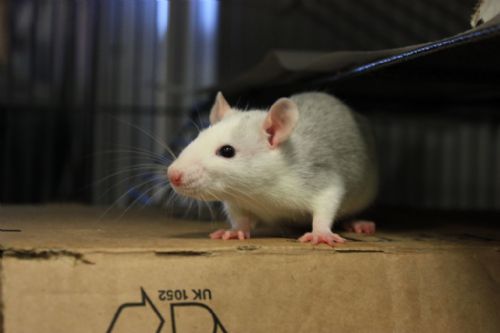Sniffing Out the Most Effective Training Method for Detection Animals
15 April 2021
From tracking criminals and missing people to sniffing out explosives and even some forms of disease, detection animals play an important role in helping to keep people safe around the world. Now, a new research study by animal behaviour experts at the University of Lincoln, UK, suggests that there may be more efficient methods of […]

From tracking criminals and missing people to sniffing out explosives and even some forms of disease, detection animals play an important role in helping to keep people safe around the world.
Now, a new research study by animal behaviour experts at the University of Lincoln, UK, suggests that there may be more efficient methods of training to help these animals to carry out their important roles.
Currently, the majority of animal detection work is carried out by dogs, but other species are also effective at identifying scents, with African giant pouched rats being successfully used to hunt out landmines in countries including Cambodia.
Professor Anna Wilkinson and a team of researchers from the University of Lincoln have been studying a group of fancy rats to try and identify the most effective methods of odour training.
Professor Wilkinson explains: “Often detection animals are trained by presenting them with only one odour until they have learned it before moving onto another, so each odour is trained sequentially (called ‘sequential’ training). However, other methods may be more effective, such as mixing the odours together and then training the animals on the mixture (‘compound’ training), or presenting the odours separately but training on them all at the same time (‘intermixed’ training).”
This study is the first time that these different odour training methods have been directly compared.
The rats were always rewarded with food if they responded to the correct odours, but the order in which the odours were trained differed in each method. The researchers observed how quickly the training had an effect on the rats’ ability to identify a particular odour, and how effective they were at doing this.
Professor Wilkinson said: “Our data reveals that the method of training can substantially impact an animal’s ability to identify target odours and generalise their learning to other similar odours – a skill that is really important for detection animals.
“We found intermixed training was more effective than both compound and sequential training, with compound training also being more effective than sequential training.
“This is really exciting, as the results suggest that the way odours are learnt may enhance performance and allow detection animals to carry out their work even more effectively.
“After finishing their important work at the University of Lincoln, our amazing rats were all adopted as pets and went on to live happily in their new homes!”
This work, funded by the UK Government under the CONTEST research programme, may inform the way we train detection animals in the future.
The full study can be read at Science Direct.
Photo credit: Sophie A Moszuti
